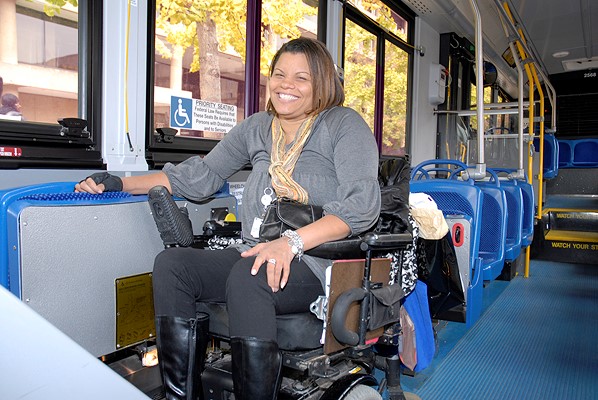This blog features highlights from the Bureau of Transportation Statistics’ September 2018 Travel Patterns of American Adults with Disabilities. The report reinforces the role that transportation has in consistent access to employment, social activities, daily errands, and healthcare.
Background
The Travel Patterns report uses data from the 2017 National Household Travel Survey (NHTS) to examine the daily travel patterns of American adults with travel-limiting disabilities and data from the 2001 and 2009 NHTS to illustrate trends over time. The NHTS, conducted by the Federal Highway Administration (FHWA), is the primary source of data on household travel behavior in the United States. FHWA conducted the latest version in 2017 and earlier versions in 2001 and 2009.The NHTS asks individuals to self-report if they have a travel-limiting disability. While the report focuses on adults age 18 to 64, it also includes analysis for workers and non-workers, rural- and non-rural residents, and people age 65 and older.
Key Highlights from the Report
Travel-Limiting Disabilities
- 25.5 million Americans age 5 and older have self-reported travel-limiting disabilities.
- 13.4 million are age 18 to 64 and 11.2 million are age 65 and older.
- 3.6 million Americans with travel-limiting disabilities do not leave their homes because they have a disability or are housebound.
Household Demographics and Vehicle Ownership
- Only one-fifth of people age 18 to 64 work full- or part-time if they have travel-limiting disabilities. (This percentage declined from previous years.)
- In contrast, over three-quarters of people without disabilities age 18 to 64 work.
- Slightly over half of people age 18 to 64 with disabilities live in households with annual household incomes under $25,000 versus 15% of people without disabilities.
- Over one-fifth of non-workers and 12% of workers age 18 to 64 with disabilities live in zero-vehicle households.
Trip Frequency
Regardless of age, people with disabilities make fewer trips per day on average than people without disabilities. The daily trip rates for people with disabilities and without disabilities has declined over time.
- Workers with disabilities age 18 to 64 make fewer trips compared for workers without disabilities. This pattern is consistent for non-workers with disabilities compared to non-workers without disabilities.
- 7 out of 10 respondents with disabilities reduce their day-to-day travel because of their disabilities.
Mode Share
- Regardless of age, people with disabilities travel by personal vehicles—as drivers or as passengers—for a smaller share of trips than people without disabilities.
- People with disabilities age 18 to 64 travel as passengers for a greater share of personal vehicle trips.
Technology
Several groups of technologies might help people with disability-related transportation limitations, but people with disabilities use them less.
To read more on the travel pattern statistics, download a copy of the full issue brief at the BTS website.
Photo credit: WMATA, Larry Levine

Leave a Reply